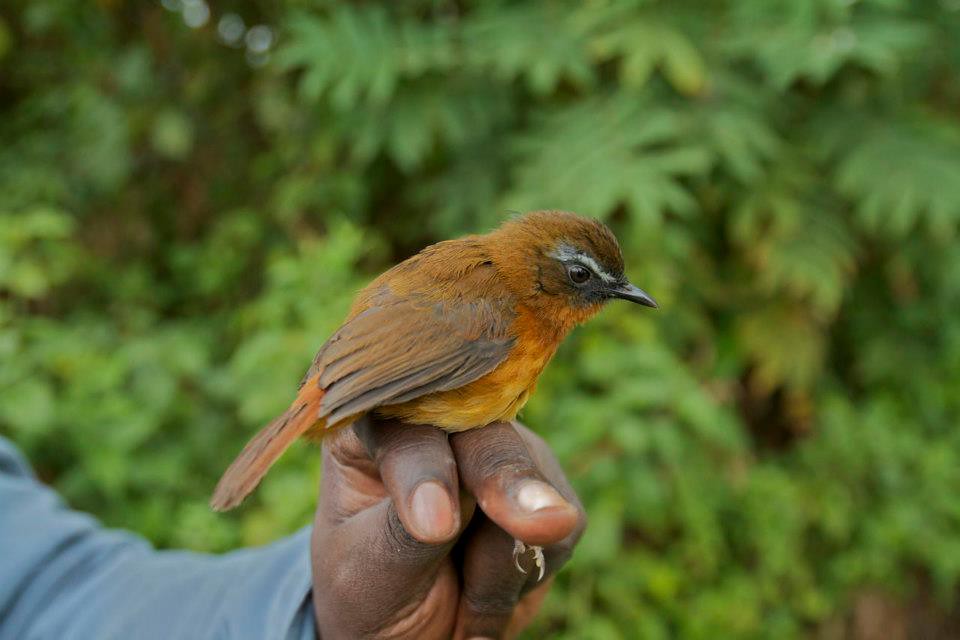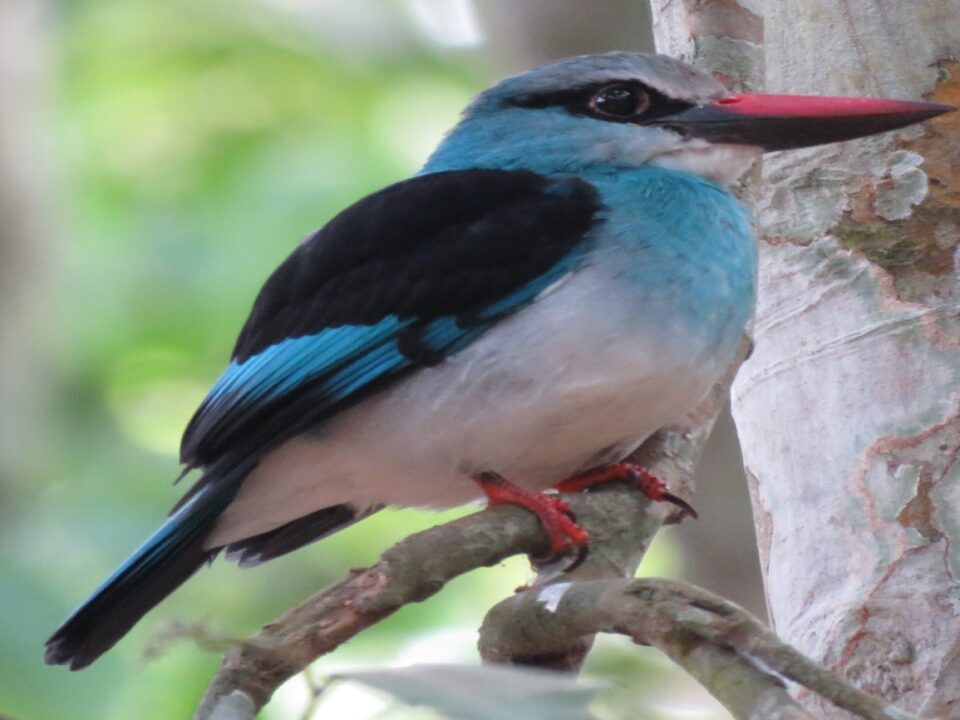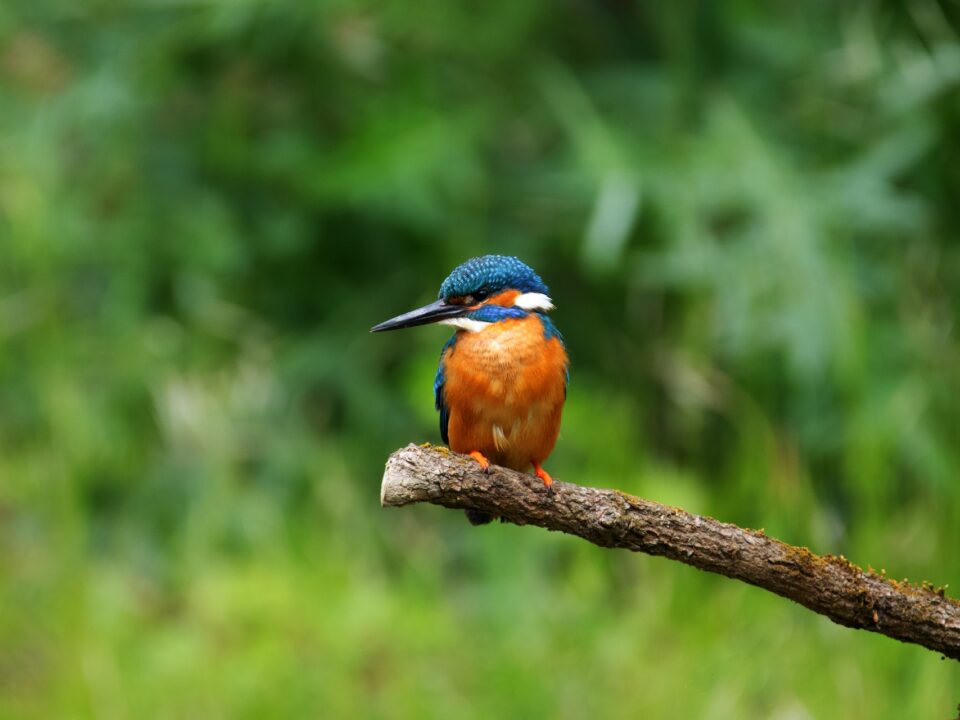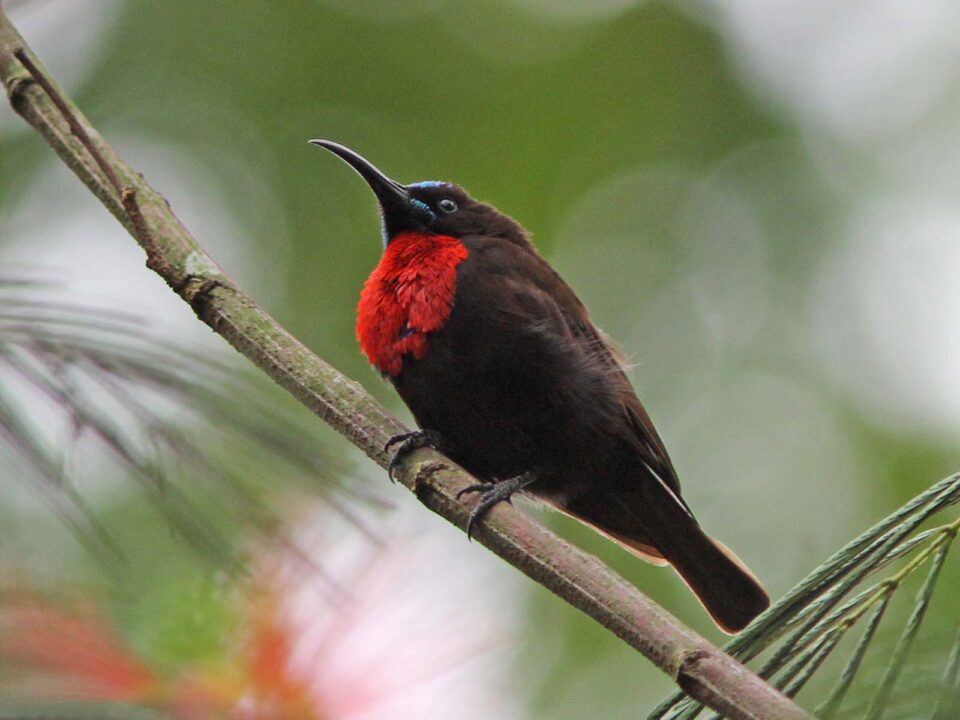Bird Watching in Kahuzi Biega National Park

Congo Chimpanzee Tracking Safaris
September 26, 2023
Congo Nature Walks and Hiking Trails
September 26, 2023Embark on a Mesmerizing Congo Birding Safari in Kahuzi Biega National Park
Kahuzi Biega National Park, located near Bukavu town in the eastern Democratic Republic of Congo, beckons bird enthusiasts from around the world to indulge in an extraordinary Congo birding safari. With approximately 342 bird species gracing its lush landscapes, including 42 that are endemic to the park, Kahuzi Biega is indeed a paradise for bird lovers.
Bird watching in Kahuzi Biega National Park
The park offers a vibrant avian spectacle, with a diverse range of bird species awaiting your discovery. Among the splendid birds spotted in Kahuzi Biega are the resplendent yellow-crested helmet shrike, the elusive African green broadbill, the captivating Congo peafowl, the striking Rockefeller’s sunbird, and many more. Kahuzi Biega National Park has earned recognition as a threatened site under the protection of the International Union for Conservation of Nature (IUCN), emphasizing the importance of preserving this avian haven.
For in-depth information on the avian wonders of the rainforest and to plan your birding adventure, we invite you to contact Trek Africa Expeditions.
Exploring Kahuzi Biega National Park
Kahuzi Biega National Park is a sprawling natural wonderland situated near the western bank of Lake Kivu and the Rwandan border. Its conservation history traces back to 1970 when Belgian photographer and conservationist Adrien Deschryver initiated efforts to protect this remarkable ecosystem. The park derives its name from two dormant volcanoes within its boundaries: Mount Kahuzi and Mount Biega.
Spanning an impressive 6,000 square kilometers, Kahuzi Biega National Park features diverse topography, ranging from majestic mountains to lowland terrain. At its core lies a vital population of endangered Eastern lowland gorillas (Gorilla beringei graueri). The park holds the distinction of being a UNESCO World Heritage Site since 1980, celebrated for its unparalleled biodiversity and its role as a haven for Eastern lowland gorillas.
A Haven of Biodiversity
Kahuzi Biega National Park boasts a rich tapestry of flora and fauna, with 136 mammal species, 349 bird species, and a remarkable 1,178 plant species calling it home. The park is most renowned for its iconic Eastern lowland gorillas, with the 2008 status report indicating a population of 125, marking a significant reduction from the pre-1990s conflict era when numbers exceeded 600. Consequently, this species has been classified as endangered. A more recent census conducted by the Wildlife Conservation Society in April 2011 revealed at least 181 gorillas residing in the park.
Beyond Gorillas: A Tapestry of Wildlife
While gorillas take center stage, Kahuzi Biega is also home to an array of other primates, including the Eastern chimpanzee, along with various species of Cercopithecinae, Colobinae, and the distinctive owl-faced monkey. The park boasts a diverse mammal population, featuring bush elephants, bush buffaloes, Hylocereus, bongos, aquatic civets, eastern needle-clawed galagos, Maclaud’s horseshoe bat, Ruwenzori least otter shrew, Alexander’s bush squirrel, and more.
The park’s landscapes offer a unique blend of swamps, bogs, marshlands, and riparian forests, creating rare hydromorphic environments at all altitudes. The western lowland sector is cloaked in dense Guinea-Congolian wet equatorial rainforest, complemented by a transition forest between 1,200 meters and 1,500 meters.
Venturing into the eastern mountainous sector unveils a continuous spectrum of forest vegetation from 600 meters to over 2,600 meters, showcasing all stages of the low to highland transition. This transition includes six distinct primary vegetation types: swamp and peat bog, swamp forest, high-altitude rainforest, mountain rainforest, bamboo forest, and subalpine heather.
Within this diverse landscape, mountain and swamp forests thrive between 2,000 meters and 2,400 meters, while the bamboo forest flourishes between 2,350 meters and 2,600 meters. Above 2,600 meters, the summits of Mounts Kahuzi and Biéga reveal subalpine heather, dry savannah, grasslands, and the endemic Senecio kahuzicus.
As you embark on your Congo birding safari in Kahuzi Biega National Park, you’ll not only revel in the enchanting world of birds but also become part of the ongoing efforts to preserve this remarkable biodiversity hotspot. The park’s diverse ecosystems, captivating wildlife, and stunning avian inhabitants await your exploration, promising an unforgettable journey into the heart of nature’s wonders.




